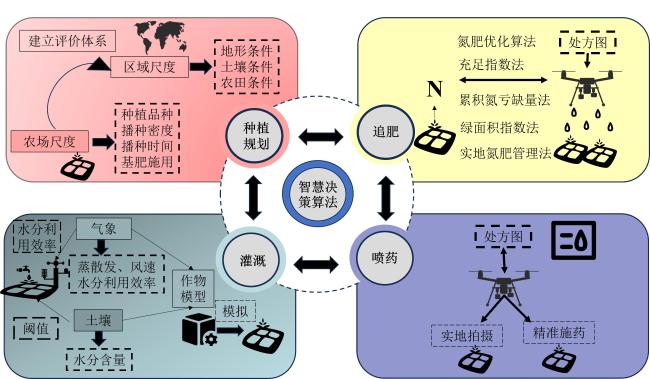0 引 言
1 水稻生产遥感监测现状
图1 水稻生产遥感监测技术路线图Fig. 1 Technical roadmap for remote sensing monitoring of rice production |
表1 水稻监测中卫星和无人机监测要素表Table 1 Table of monitoring elements of satellite and unmanned aerial vehicle in rice monitoring |
| 遥感平台 | 监测要素 |
|---|---|
| 卫星遥感 | 水稻种植分布:基于不同光谱指数在不同生育期的变化识别水稻种植分布 生育期识别:利用植被指数时间序列的阈值及动态变化判断关键生育节点 长势:获取长时序、大规模的叶面积指数(Leaf Aera Index, LAI)、地上生物量等参数 灾害:旱涝灾害可利用与含水量相关植被指数变化监测,部分病虫害结合植被指数及环境因子判断 产量:结合作物模型,利用区域尺度的植被指数等信息进行预估 |
| 无人机遥感 | 水稻种植分布:在地形复杂区域,利用高分辨率影像精确识别 生育期识别:通过高分辨率图像观察作物表型特征确定关键生长期 灾害:精确判断水稻倒伏、旱涝灾害、识别病虫害 长势:实时、高精度监测LAI、叶绿素含量、光合作用效率等参数 产量品质:结合光谱、纹理数据和气象变量预估产量和籽粒品质 |












